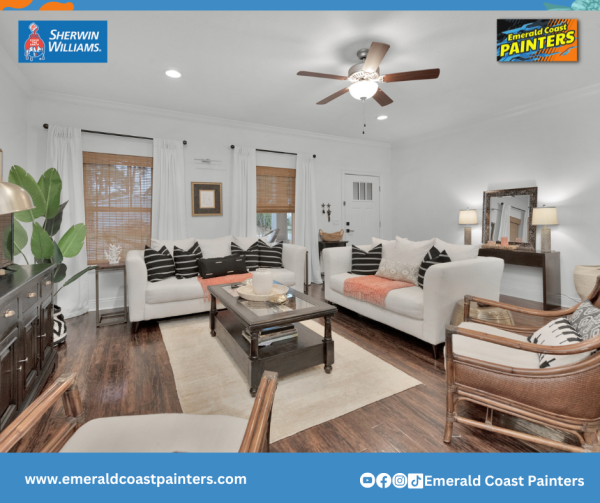Blog 15
The Psychology of Color: How Paint Color Affects Mood and Emotion

Paint color goes beyond aesthetics; it has a profound impact on our mood and emotions. Understanding the psychology of color allows us to harness its power to create desired atmospheres in our living spaces.
Understanding Color Psychology:
Colors have the ability to evoke emotions and influence our psychological state. Warm colors like red, orange, and yellow tend to energize and evoke feelings of warmth and happiness. On the other hand, cool colors such as blue, green, and purple have a calming effect and promote relaxation.
Impact of Paint Color on Mood:
Different colors elicit specific emotional responses. For example, blue is often associated with tranquility and can be ideal for bedrooms or spaces where relaxation is desired. In contrast, vibrant and bold colors like red can evoke passion and intensity, making them suitable for spaces intended for stimulation or socialization.
Applying Color Psychology in Interior Design:
When selecting paint colors, it's essential to consider the intended mood and purpose of the space. Neutral colors provide a versatile backdrop and can be complemented with accent colors to create the desired atmosphere. Harmonious color schemes, such as analogous or monochromatic palettes, can evoke a sense of balance and harmony.
Psychological Effects of Common Paint Colors:
Let's explore the psychological effects of popular paint colors:
Red: This bold color stimulates energy and passion. It can be used in spaces where excitement and stimulation are desired, such as dining areas or home gyms.
Blue: Associated with calmness and serenity, blue is perfect for bedrooms or areas intended for relaxation, like a reading nook.
Yellow: Symbolizing optimism and happiness, yellow can create an uplifting and cheerful atmosphere. It's a great choice for kitchens or home offices.
Personalizing Color Choices:
While color psychology provides valuable insights, personal preferences should also be considered. Factors like personal associations, cultural influences, and individual taste play a role in selecting the right paint colors. It's important to strike a balance between emotional effects and personal preferences to create a space that resonates with you.
Color is a powerful tool that can shape our mood and emotions. By understanding the psychology of color, we can transform our living spaces into havens that evoke the desired feelings. Experiment with paint colors and embrace the potential they hold in enhancing your overall well-being.